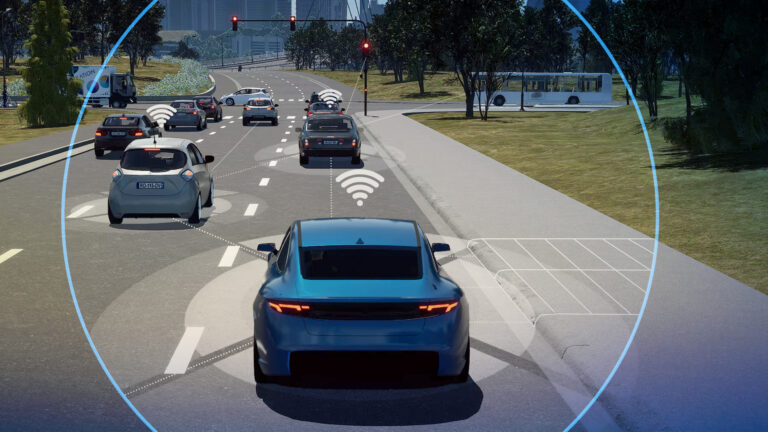ADAS Calibrations Manchester Precision is our speciality!
07949 133996
Vehicle ADAS Calibration services all over Greater Manchester

Understanding the Different Types of ADAS Calibrations
Advanced Driver Assistance Systems (ADAS) are crucial in modern vehicles, enhancing safety and providing an array of functions from lane-keeping assistance to automatic emergency braking. To function optimally, these systems rely on precise calibrations. Here, we delve into the different types of ADAS calibrations, exploring why they are essential and how they are performed.
Static Calibration
Static calibration occurs while the vehicle is stationary. This method typically requires specialized equipment, such as calibration targets, which are placed in specific positions around the vehicle. Cameras and sensors, including radar and lidar, are then calibrated using these fixed targets.
- Camera Calibration: Cameras are integral to many ADAS features, including lane departure warnings and traffic sign recognition. Calibration involves aligning the camera’s view with predefined patterns on a target. This ensures the camera accurately perceives and processes visual data.
- Radar Calibration: Radar systems are used for adaptive cruise control and collision avoidance. Static calibration ensures radar sensors correctly measure distances and detect objects. This process involves placing reflective targets at specified distances and angles to adjust the radar sensors accurately.
- Lidar Calibration: Lidar, used for 3D mapping and object detection, requires precise alignment with fixed targets. Static calibration ensures the lidar system accurately measures distances and interprets the surrounding environment.
Dynamic Calibration
Dynamic calibration involves driving the vehicle in specific conditions to adjust the ADAS components. This type of calibration often complements static calibration, ensuring systems function correctly in real-world scenarios.
- Real-World Conditions: Dynamic calibration tests ADAS components like cameras and sensors during actual driving. It verifies that the systems respond correctly to various conditions, including different speeds, lighting, and road types.
- Sensor Fusion Calibration: Many ADAS systems rely on sensor fusion, combining data from multiple sensors for a comprehensive view of the environment. Dynamic calibration ensures that data from different sensors, such as cameras and radar, are accurately integrated and interpreted by the vehicle’s control systems.
Initial vs. Recalibration
The need for calibration extends beyond the initial installation of ADAS components. Recalibration is necessary when certain events occur, ensuring the systems continue to function correctly.
- Initial Calibration: This is performed during the manufacturing process or when a new ADAS component is installed. It sets the baseline for the system’s functionality, ensuring all sensors and cameras are correctly aligned and configured.
- Recalibration: Various factors can necessitate recalibration:
- Accidents: Even minor collisions can misalign sensors and cameras, requiring recalibration to restore accurate functionality.
- Windshield Replacement: Since many ADAS cameras are mounted on or near the windshield, replacing the windshield often necessitates recalibration to ensure proper camera alignment.
- Suspension Adjustments: Changes to a vehicle’s suspension can alter sensor angles and positions, making recalibration necessary.
- Software Updates: Upgrading the vehicle’s ADAS software can require recalibration to ensure compatibility with the new system parameters.
OEM vs. Aftermarket Calibration
Calibration processes can vary between original equipment manufacturer (OEM) systems and aftermarket installations. Understanding these differences is crucial for maintaining ADAS functionality.
- OEM Calibration: OEM calibrations follow the manufacturer’s specifications, using proprietary equipment and procedures. This ensures the ADAS components function as intended by the vehicle’s original design. OEM calibrations are typically more precise but can be more costly and time-consuming.
- Aftermarket Calibration: Aftermarket calibrations are performed when non-OEM parts are installed. These can include replacement cameras, sensors, or entire ADAS modules. Aftermarket calibration processes may use different equipment and standards, which can sometimes lead to discrepancies in system performance compared to OEM specifications.
Challenges and Future Directions
While ADAS calibrations are essential for vehicle safety and functionality, they pose several challenges:
- Technical Complexity: The increasing sophistication of ADAS components makes calibration more technically demanding. Technicians must be well-trained and equipped with advanced tools to perform accurate calibrations.
- Standardization Issues: Lack of standardization across different manufacturers and models can complicate calibration procedures. Each vehicle may require a unique set of tools and processes, increasing the complexity and cost of calibrations.
- Evolving Technology: As ADAS technology continues to evolve, so too do the calibration requirements. Keeping up with the latest advancements and ensuring compatibility with new systems is an ongoing challenge for technicians and vehicle owners alike.
Conclusion
ADAS calibrations are a critical aspect of modern vehicle maintenance, ensuring the advanced safety systems function correctly and reliably. Understanding the various types of calibrations—static, dynamic, initial, and recalibration—and the challenges associated with them is essential for anyone involved in vehicle repair and maintenance. As technology continues to advance, staying informed about the latest calibration techniques and standards will be vital for ensuring road safety and optimal vehicle performance.
An array of resources
Our comprehensive suite of professional services caters to a diverse clientele, ranging from homeowners to commercial developers.
Études Architect App
- Collaborate with fellow architects.
- Showcase your projects.
- Experience the world of architecture.


Études Newsletter
- A world of thought-provoking articles.
- Case studies that celebrate architecture.
- Exclusive access to design insights.
“Études has saved us thousands of hours of work and has unlocked insights we never thought possible.”
Annie Steiner
CEO, Greenprint
Watch, Read, Listen
Join 900+ subscribers
Stay in the loop with everything you need to know.